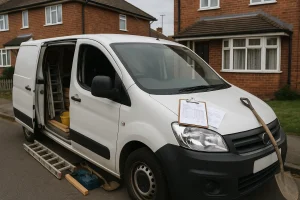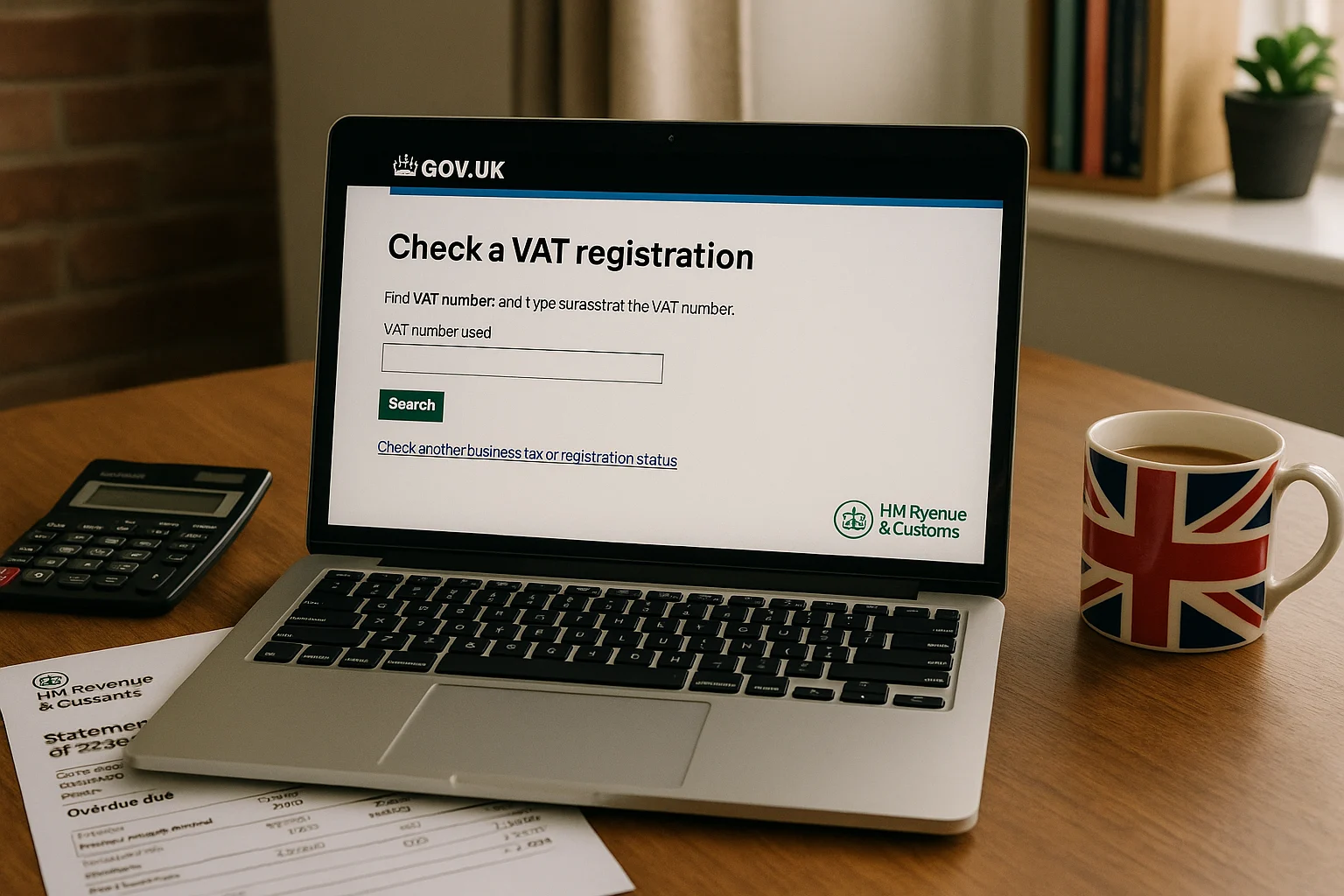For self-employed individuals in the UK, a van is often more than just a means of transport, it’s an essential business tool.
Whether used for deliveries, client visits, or transporting tools and materials, the costs associated with owning and running a van can be considerable.
Fortunately, HMRC allows self-employed people to claim back certain van expenses, reducing their tax bill. But how much can actually be claimed? That depends on several factors including usage, method of claiming, and record-keeping.
This guide covers everything self-employed professionals need to know about claiming van expenses, including allowable costs, simplified expenses, capital allowances, and mileage claims.
What Are the Rules for Claiming Van Expenses When Self-Employed in the UK?

When a self-employed individual uses a van for business purposes in the UK, HMRC allows various tax deductions to offset the costs associated with ownership and usage.
However, these deductions are only valid when they relate directly to business activities. The van does not have to be used exclusively for business purposes, but only the business-use portion of the costs is allowable.
The distinction between personal and business use is critical. If a van is used partly for personal reasons, such as commuting or running errands, only the proportion used for business can be claimed.
HMRC expects self-employed individuals to maintain clear and accurate records to justify any claims made.
To comply with HMRC rules, self-employed individuals should:
- Log business mileage consistently with dates, destinations and purpose of trips
- Keep receipts for expenses such as fuel, insurance and maintenance
- Retain finance or lease agreements, especially if claiming capital allowances
Failure to maintain accurate records can result in disallowed claims and potential penalties during HMRC audits.
Can I Use Simplified Expenses or Actual Costs for My Van?
HMRC provides two recognised methods for claiming van-related expenses: the simplified expenses method and the actual cost method.
The choice between these depends on your type of business, the amount of van usage, and how much time you want to spend maintaining records.
Simplified Expenses Method
This method allows self-employed individuals to claim vehicle costs using a fixed rate per business mile travelled.
The rate covers fuel, insurance, maintenance and depreciation, so individual receipts are not required for those items.
| Annual Business Mileage | Claim Rate (Per Mile) | Maximum Allowable Claim |
|---|---|---|
| First 10,000 miles | £0.45 | £4,500 |
| Miles over 10,000 | £0.25 | Varies |
For example, if you drive 12,000 miles for business purposes in one year, your claim would be:
- 10,000 miles × £0.45 = £4,500
- 2,000 miles × £0.25 = £500
- Total Claim: £5,000
This method is ideal for sole traders who drive a consistent number of miles and prefer a simple system without needing to manage individual receipts and invoices.
Actual Costs Method
The actual cost method involves tracking all vehicle-related expenses throughout the year and claiming a portion based on business use. This method is typically more suitable for those with high van expenses or irregular mileage.
Claimable costs under this method may include:
- Fuel
- Insurance
- Repairs and servicing
- Vehicle tax
- MOT testing
- Breakdown cover
- Tyres and oil
- Cleaning services (if related to business)
You must calculate the business-use percentage based on mileage or another accurate method. For example, if your van is used 70% for business purposes, you may only claim 70% of the total costs. This method requires comprehensive record-keeping, but it can result in a larger deduction if the actual expenses are high.
What Counts as Allowable Van Expenses?

Allowable expenses vary depending on how the van is used and how the individual chooses to claim. Under the actual cost method, the following are typically allowed as tax-deductible expenses:
- Insurance for commercial use
- Servicing and general maintenance
- Replacement tyres and battery
- Business-related fuel costs
- Road tax and MOT testing
- Breakdown assistance
- Parking fees incurred for business purposes
- Cleaning costs for maintaining the van’s condition
Any private use of the van must be accounted for and excluded from the total expense. Parking fines and speeding tickets are not allowable under any method. If the van is used exclusively for business and is not available for private use, the full cost may be claimable, but HMRC may require proof.
How Do I Claim Capital Allowances for a Van?
When a self-employed person buys a van either outright or through hire purchase, they may be eligible to claim capital allowances instead of claiming the full cost as an expense in the year of purchase.
Capital allowances allow you to deduct part or all of the value of the van from your taxable profits. This is how HMRC treats long-term assets like vehicles, machinery and equipment.
Common Capital Allowance Methods
| Allowance Type | Description | Maximum Claim |
|---|---|---|
| Annual Investment Allowance (AIA) | Deducts 100% of van cost in year of purchase | Up to £1,000,000 |
| Writing Down Allowance | Spreads deduction over several years if AIA not used | 18% per year |
| First-Year Allowance | For vans with low emissions or electric vehicles | 100% in year of purchase |
For example, a self-employed individual who buys a van for £20,000 and uses AIA can deduct the full amount in the tax year of purchase.
If they choose not to or have already used their AIA on other purchases, they can claim 18% per year as a writing down allowance.
Capital allowances are not applicable for leased vans, but lease payments themselves may be claimed as expenses.
Is Mileage Claim Better Than Actual Cost for Van Use?

The decision between mileage and actual costs depends on several factors, including the age of the van, its running costs and how much it is used for business purposes. Each method has its advantages.
The simplified mileage method is easier to manage. There is no need to retain receipts for individual costs, and the fixed rate provided by HMRC includes most common expenses. It’s best suited for those with low to moderate business mileage and predictable costs.
The actual cost method offers more flexibility. It is especially beneficial if:
- The van is expensive to maintain
- The purchase price was high
- The van is fuel-inefficient
- You drive fewer business miles
Consider this comparison for a self-employed person using a van:
| Criteria | Simplified Expenses | Actual Cost Method |
|---|---|---|
| Business mileage: 8,000 miles | £3,600 claimed | £3,900 (70% of £5,571 total costs) |
| Business mileage: 12,000 miles | £5,000 claimed | £5,700 (90% of £6,333 total costs) |
The actual cost method may result in higher deductions, but only if the business use percentage is high and total running costs are substantial.
Can I Claim Depreciation or Finance Costs for My Van?
You can’t claim depreciation as an expense directly. However, capital allowances serve a similar purpose and are claimable.
If You Bought Your Van
- Use AIA or Writing Down Allowance to claim the van’s cost over time.
If Your Van is Financed
- You can claim interest on the finance repayments if it’s for business use.
- The van’s purchase price can be claimed via capital allowances.
If You Lease Your Van
- The lease payments (business proportion) can usually be deducted as allowable expenses.
- You cannot claim capital allowances on leased vans.
What Records Do I Need to Keep for Van Expense Claims?
HMRC requires all self-employed individuals to maintain accurate and complete records of their van expenses. This includes both those using simplified expenses and those claiming actual costs.
Essential records include:
- Mileage logs for each journey, noting the date, purpose, and distance
- Receipts for fuel purchases, servicing and repairs
- Insurance documents showing business coverage
- Finance or lease agreements
- Invoices for vehicle tax, MOT and breakdown cover
These records should be stored for at least five years after the 31 January filing deadline for the relevant tax year. HMRC may request these documents during an enquiry or audit.
Keeping digital records is recommended, especially with the rollout of Making Tax Digital for Self Assessment. Many accounting software platforms allow mileage tracking and receipt scanning, which can simplify the process.
Are There Any Common Mistakes to Avoid When Claiming Van Costs?

Several errors can reduce the effectiveness of your van expense claims or lead to HMRC penalties. One of the most common issues is incorrectly claiming 100% of van expenses when the van is also used privately. Even minimal personal use must be accounted for in expense calculations.
Another frequent mistake is failing to claim capital allowances when buying a van outright. This can result in missed opportunities for reducing taxable income. Additionally, some self-employed individuals may switch between simplified and actual costs improperly, which is not permitted once capital allowances have been claimed for a specific vehicle.
Not keeping adequate records is also a significant problem. HMRC expects detailed documentation to support all claims, especially when using the actual cost method. Missing receipts or incomplete mileage logs can lead to rejected claims.
Finally, some people forget that lease payments and finance interest must be treated differently depending on ownership status. Misunderstanding the difference between leasing and buying can lead to incorrect tax reporting.
Conclusion
For self-employed individuals, vans are crucial tools that come with significant operating and ownership costs. Thankfully, HMRC allows for a range of deductions via simplified expenses or actual costs, plus capital allowances when purchasing.
By understanding the rules, choosing the right method, and keeping accurate records, self-employed professionals can reduce their tax liability and keep more of their hard-earned income.
The best method will depend on your business mileage, purchase method, and financial goals. If in doubt, speak with a qualified accountant or tax adviser who understands the nuances of self-employed vehicle claims.
Frequently Asked Questions (FAQs)
What is the maximum I can claim for van mileage as a self-employed worker?
The maximum is calculated using HMRC’s simplified rate of 45p per mile for the first 10,000 miles and 25p per mile thereafter. There’s no official cap, but you must be able to justify the mileage as business-related.
Can I claim 100% of van expenses if I use it only for business?
Yes, if your van is used exclusively for business with no personal use, you can claim 100% of running costs and capital allowances. Keep records to prove exclusive use.
How does VAT apply to self-employed van expenses?
If you’re VAT-registered, you may be able to reclaim the VAT on van-related purchases and fuel. However, this applies only if the expenses are exclusively for business.
Can I switch between simplified expenses and actual costs?
You can switch from mileage to actual costs, but not the other way around once capital allowances have been claimed for the van.
Is insurance for a self-employed van claimable?
Yes, commercial vehicle insurance is an allowable expense, provided it covers business use and is proportional to business activity.
What if I use my van for both personal and business use?
You’ll need to calculate the business use percentage and apply it to all expense claims. Keep a detailed log to support your estimate.
How do I claim van expenses on my tax return?
On your Self Assessment tax return (SA103), enter your van expenses under “Motor Expenses.” Be sure to indicate whether you’ve used simplified or actual cost methods.







